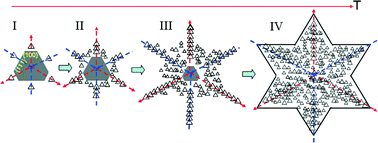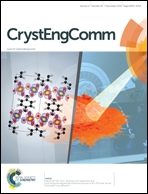Interplay mechanism between secondary phase particles and extended dislocations in CdZnTe crystals†
Abstract
To interpret the interplay mechanism of dislocations associated with secondary phase (SP) particles, <111> CdZnTe crystals are annealed at isothermal and thermal gradient conditions under Cd/Zn and Te overpressure, respectively. The etching pit arrangement surrounding Te-SP is evaluated to gain an insight into the generation and multiplication of induced dislocations. It is demonstrated that Te-SP dissociation dominates the volume variation during isothermal annealing. This dissociation is enhanced under Cd/Zn overpressure due to an exothermic reaction, which results in the activation of dislocation glide and climb systems and, simultaneously, the diffusion of Tei. In turn, ‘radial-shaped’ dislocation rosettes and ‘star-shaped’ dislocation clusters appear on the {111}B surface after preferential etching. However, for thermal gradient annealing, Te-SP thermomigration predominates. The induced dislocation density is related to the Te droplet drift velocity. Meanwhile, Cd/Zn and Te overpressure could promote or slow down the migration. Interestingly, no remarkable dislocation rosettes or clusters are observed after temperature gradient annealing under Te overpressure.


 Please wait while we load your content...
Please wait while we load your content...